



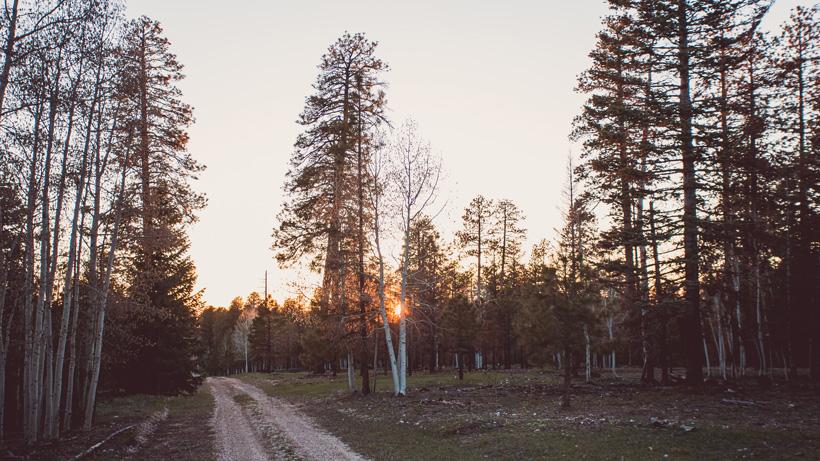
Driving roads in the summer to learn the unit
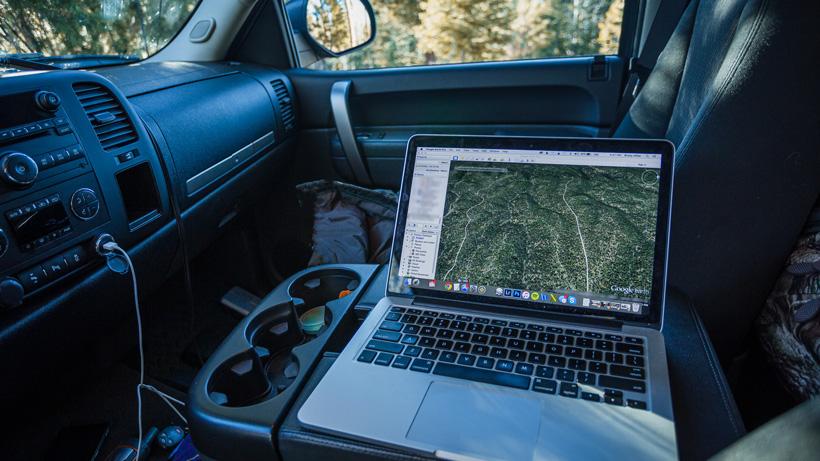
I also like to cache my unit on Google Earth on my computer while summer scouting. This way, I can quickly access my research on a big screen.

Summer mule deer scouting can be accomplished with a spotting scope from the truck.

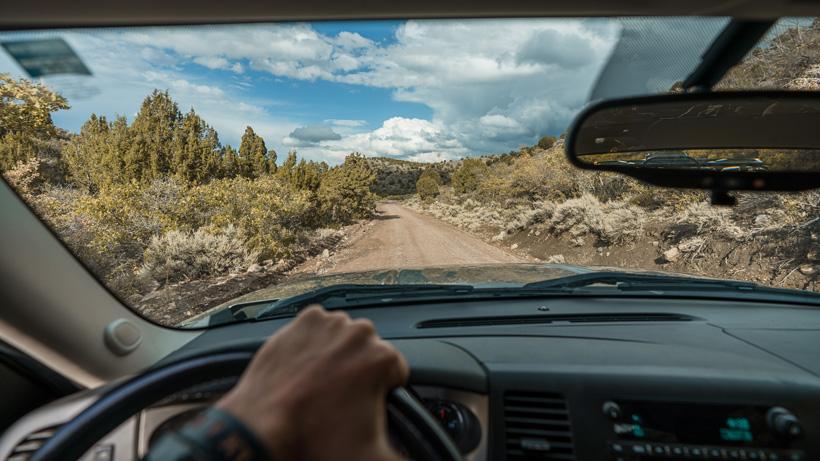
Driving down roads to summer scout for mule deer
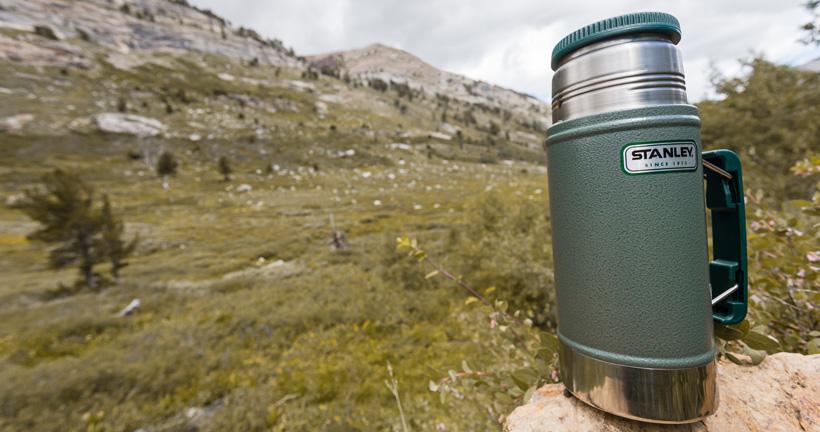
Lots of coffee might be needed for a weekend summer mule deer scouting trip.
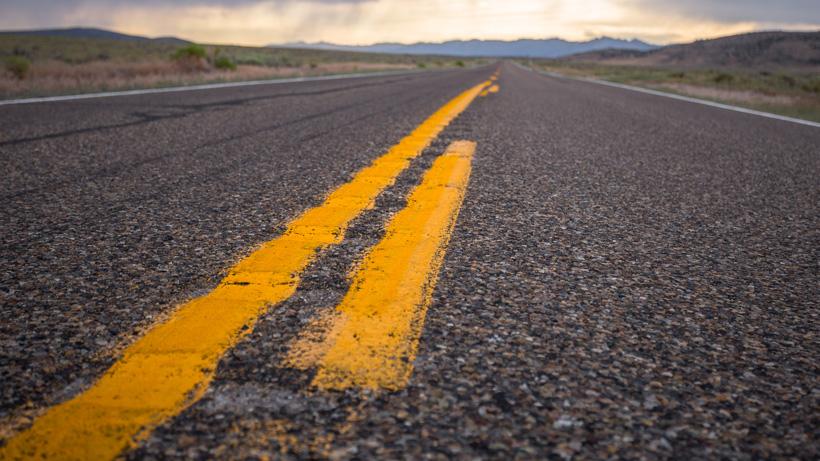
Windshield time will be a common theme as you move around the unit in the summer to scout for fall hunts.
Can you effectively scout for mule deer in late July through the end of August when your hunt isn’t until October or early November? The answer to that might surprise you.
Let’s face it, summer scouting for velvet bucks in the mountains is amazing! High country bucks are lounging around and are very patternable during the lazy days of summer. For the most part, with a little knowledge on habitats, buck behavior and some sweat equity, you sit pretty while glassing up velvet bucks. However, the typical summer scouting for these velvet bucks might not benefit you if you have a late October or early November hunt because those bucks could be miles away when your hunt finally starts—or worse—completely migrated out. That typical summer scouting in the alpine could be worthless…unless you flip your tactics on how you’re actually scouting, which is what this article will dive into.
What I want out of my summer scouting is to know exactly where to be on the first day of my hunt that will put me in a prime position to start learning what the bucks are doing and, if I’m lucky, take a buck.
Summer scouting for fall hunts means you are not eating up precious “hunting time” in the fall trying to learn a new unit. Let’s face it: once September rolls around, getting any time to slip away for a scouting trip is extremely limited as that is valuable time for certain hunts and the time to stack on work at home before a busy hunting schedule.
When scouting for my fall hunts, I’d rather burn summer days than burn hunting/scouting days in the fall trying to learn the unit I’ve never stepped foot in. Plus, when you’re “burning” these precious hunting days trying to quickly learn a unit while you hunt it, you’re not only letting hunting days slip by, but you’re also beating up your body and mind. Trying to guess things and learn a unit while you hunt it greatly increases the chance that you will get burned out.
If you know the general layout of the unit from your summer scouting efforts—or knew of the locations of a few bucks—you could focus your time and energy there instead of scrambling during the limited number of hunting days that you have to hunt.
It doesn’t take a lot of time to effectively scout for fall hunts during the summer; it just takes having the right approach to your summer scouting efforts. Showing up blind and not knowing the trail system, roads, and access points will only hurt you during a hunt, burning away precious hunting days while you try to quickly learn about your unit.
Here’s where we will return to the original question: can you effectively scout for mule deer in late July or through the end of August when your hunt isn’t until late fall? My answer to that is a resolute yes! What can you do in the summer months to put you leaps and bounds ahead of other hunters on a fall hunt? It all lies in the fundamentals of learning a unit and getting down to the basics of mule deer’s needs of feed, security, knowing movements during the time of the year and transitional zones. When it comes to habitats, the core components of mule deer habitat during any time of the year are consistent: water, food, and cover. More on this in the second part of this series.
What looks great on the computer can be vastly different than in the field, I'll be the first to admit that. However, all of my pre-scouting research starts at the computer. I mark anything and everything on GOHUNT Maps before I even step foot in a unit. I have to first lay down a solid foundation of pre-in-the-field-scouting before strapping my boots on and hitting the hills. I start by taking an in-depth look at public land maps, narrowing down several areas that I feel look very “bucky.” Then, I move onto marking all the access roads throughout the unit. To save some space in this article, I’ll touch on this further on a pre-scouting research article at a later date.
I know a lot of people call this e-scouting, but for the majority of us with limited time, this type of research is actual scouting and this level of work is a tremendous undertaking when you get down to it. As much as I would love to just drive across the West and run through the mountains to put boots on the ground and scout, I need to have a well thought out plan of attack. And I don’t skimp in this area.
Nothing beats actual scouting intel that you collect from a unit and the quickest way to do that is from a vehicle. As much as I love hiking and carrying my entire camp on my back, if I only have a weekend to scout an out-of-state unit, I need to cover some ground and assess the lay of the land. When starting this “vehicle” scouting session, I like to drive down a bunch of the roads and check out the terrain of the mountains surrounding me. I’m not looking at the terrain close to the road. Rather, I’m assessing the terrain that could be miles away from the road. I want to see what the unit actually looks like after pouring over maps during the offseason.
It’s best to take a sample of the road situations throughout your unit. Obviously, it’s impossible to check them all out depending on what your unit looks like.
Summer scouting for fall hunts is all about learning how to navigate and hunt the unit. I feel a lot of my time is best spent looking over lots of country from several different angles. This way I’m not going in blind, but now I have a giant head start once I start hunting. While driving the unit, you’ll quickly start to notice certain pockets or areas that you missed during your scouting efforts behind the computer. This is why you can never leave all your research to sitting behind a computer. I’m the first to admit that type of scouting is important, but it doesn’t show you everything.
When I find new areas that look promising, I always take a photo of what the terrain looks like from my vantage point. Then, after taking the photo, I’ll write down the file name, time taken and date into a notepad. Or, if I take that photo with my cell phone, I’ll move it into a scouting album and mark on my mapping service that I took a photo from here and will call it “Photo 1” or whatever number of photo I’ve taken from that trip so I know how to cross reference it later.
This not only helps me reference what caught my eye, but it also helps me see why I missed this spot during my at-home computer scouting sessions on GOHUNT Maps. I can now take a look at the computer and compare my photos to cross reference the terrain to other areas of the unit with similar terrain. This is also a great tip to utilize when you are on your actual hunts. That information could be used for future hunts, even if they are in different states.
While driving the unit, don’t be afraid to bust out your spotting scope and throw it on a window mount to assess the terrain from a long distance away.
Another thing to keep an eye out for is closed logging roads. These can be gold mines of good luck come late-season hunts. They not only allow you to quickly hike to different vantage points, but they also pose a barrier to entry to anyone who strictly “has to” hunt from an ATV or vehicle.
Another great thing to do when scouting from your vehicle is to jot down how long that gravel road takes you to drive up once you leave the pavement to the point where you put that backpack on (seems silly, but when you only have five days of vacation for a fall hunt every minute you can actually spend hunting is precious time). Also, it can be a good idea to mark how long it takes you to get from one spot where you park your truck to your Plan B access point with your vehicle.
This way, if your Plan A spot doesn’t pan out and you have to move to a new hunting area, you’ll know how much time you have to allow to drive so you can make sure you have enough time to reach your new evening glassing point.
I’ve used this to my advantage several times after I decided to try out a spot one more morning. After the morning hunt was unproductive, I knew I had to be back at the truck by 1 p.m. so I could make the drive to my Plan B area and allow myself ample time to hike in to my new evening glassing point.
Nothing is worse than showing up for your hunt and noticing that a road that you thought you could access with your truck was actually an ATV only trail (even when several mapping services didn’t mention that it was a restricted access trail). This exact situation happened to my brother on an Idaho elk and mule deer hunt a few years ago. They drove from Minnesota to Idaho and the spot they had picked out to drive up to access some spots further into the mountains turned out to be an ATV only trail. They battled a few days of hiking this trail, but, soon, enough was enough. As crazy as it sounds, they jumped on Craigslist and purchased an ATV from someone is a small town nearby to hunt off of the rest of the week. When they returned to Minnesota after the hunt, they sold the ATV and made some money off it.
Another key part of this: what if, while hunting, you spot a buck a great way off in the distance that you want to take a closer look at. what can you do to quickly get closer? This brings us back to the point we were talking about earlier on finding out quick ways to loop around the spot we are hunting and then park your truck and start the hike in again. As crazy as it may seem, when it comes down to a lot of these later season hunts, a vehicle or ATV could be a great tool to utilize.
During the summer, if you know you’ve found a solid looking late season spot, but you see a small two-track off in the distance, it might be worth your time to see if you could get your vehicle around to that road in case you need to relocate and hike in on a buck. This not only saves precious hunting time, but it also gives you more options when it comes to glassing an area at different angles in thick aspen or dark timber type terrain. Glassing from multiple angles is always huge for locating an old mule deer!
I fully believe that to be a successful mule deer hunter you need to have backup plans. And, by backup plans, I mean backup plan on top of backup plan. I can’t begin to express how many times I’ve been on a hunt only to have something change at the last minute. For example, my Plan A spot wasn’t producing, so I quickly had to change course and move on to my Plan B location and, then, eventually, I killed a great mule deer on my Plan D spot. And, by switching up plans, your backup spot might have finally meant hiking back to the truck and relocating to a totally different area.
If you don’t have the knowledge of these different access points from your summer scouting, you might be stuck sitting around at your unproductive area trying to put together a plan by staring at the maps on your phone or GPS. That time, once again, is valuable!
This is not to say that your Plan A spot was bad. Rather, the weather conditions might have changed and pushed deer lower or a group of elk hunters might have made camp in your spot two days before the opener, etc.
You need to have all the potential backup access points nailed down ahead of time. So, figure out all the different parts of the unit that you could use to access potential hunting areas.
Again, nothing is worse than scrambling to find a way to access some Forest Service land when the clock is ticking on your coveted hunt. This is especially important if certain roads that you thought you could drive down and access turned out to stop with a gate across the road and no trespassing signs everywhere on what is a public road. I encountered several of these on a second season Colorado mule deer hunt a few years back and it was very frustrating that driving up that road that I had never been down before cost us two hours of daylight hunting time.
This problem could have easily been solved in the summer when I wasn’t burning up my precious hunting time.
Another good source of information for your fall hunt is checking out agency websites for motor vehicle use maps. They will not only highlight all of the roads in the area and the number/name of the road, but they will also mention if they have a hard closure date. Once you dive into those maps, you can also find road status maps that show the status of the road (muddy, travel impassable, etc). These are updated randomly, but can be a great thing to check out right before your hunt so you know if you can access your hunting area or if you have to access it from a backup plan. I take things one step further and grab a file of the motor vehicle use map that I can overlay on Google Earth.
This importance of having several backup plans and several different ways to access the same country paid off bigtime in 2018. After trying to find bucks in a certain area in early November and determining that they had moved out, luckily I knew how to access my Plan A spot from another angle, which should be where the bucks had moved to that I knew about from previous scouting trips. The next morning, we were able to get off the mountain, relocate and then hike back up to where I had originally wanted to hunt (but accessed from a better route, which ultimately meant we had to backpack hunt at a not so typical elevation for that time of year). I ended up killing my best buck to date and the hunt was saved because I knew multiple ways to access the same country.
Summer scouting for fall mule deer hunts means you need to give up on the idea that actually laying eyes on bucks is the most essential part. Sure, seeing a great buck in your unit is very motivating, but will that buck be there in October or early November? The answer to that depends on a lot of factors, but locating a big buck doesn’t have to be priority number one.
If you do find a giant buck in mid to late August, that buck could still be there through mid- to late October if the conditions are right. For the most part, hunting later in the fall means you’re either hunting timbered up bucks in their transition zones or you’re hunting migration corridors.
That buck could take so many different paths off the mountain that it might be hard to predict where he could be during the fall. Scouting out a great buck deep in the high country will not do you much good unless you can scout that buck constantly. For most of us traveling from out of state, we don’t need to be concerned with actually spotting a giant right now. However, we do need to find these transition zones or migration corridors, which is why if you only have limited scouting time in the summer, it really doesn’t pay to go deep into the mountains to locate bucks when you most likely will not be hunting them that high in the fall. Why put all your eggs into one basket to just lay eyes on a deer in one or two basins that you most likely won’t be hunting during the fall or likely even see again?
If you really want to lay eyes on deer, you can still do some long distance glassing from lower elevations by utilizing road systems or while hiking around. Again, don’t be afraid to bust out the spotting scope and mount it on the window of your truck.
As crazy as it sounds, your scouting time is actually better spent looking over the unit in a bigger picture view and trying to note any potential areas where bucks and does might move into come October or early November.
Next, we dive deeper into summer scouting for late fall success. I’m getting long-winded and need to cut this one short. Hope you enjoyed part one! You can check out part two of this series through the link below:
The next mule deer scouting article will cover the following:
Campsites
Dead end roads
Will this road be accessible during late October or early November?
turning your giant unit into small hunting areas
fall food sources
locating migration corridors
camping accommodations
if you can’t resist and need to look at bucks in the summer
plus much more
If I’m driving a unit in the summer or even during a hunt for that matter, I will mark on my GPS areas where it looks like people might have camped. Sure, some of these campsites might not be from hunters, but it’s still nice to get an assessment of the popularity of a certain area.
Big hunting camps are easy to spot; meat poles hung up, large fire rings, etc.
Can be good to hunt from as it eliminates vehicle and ATV traffic at that point.